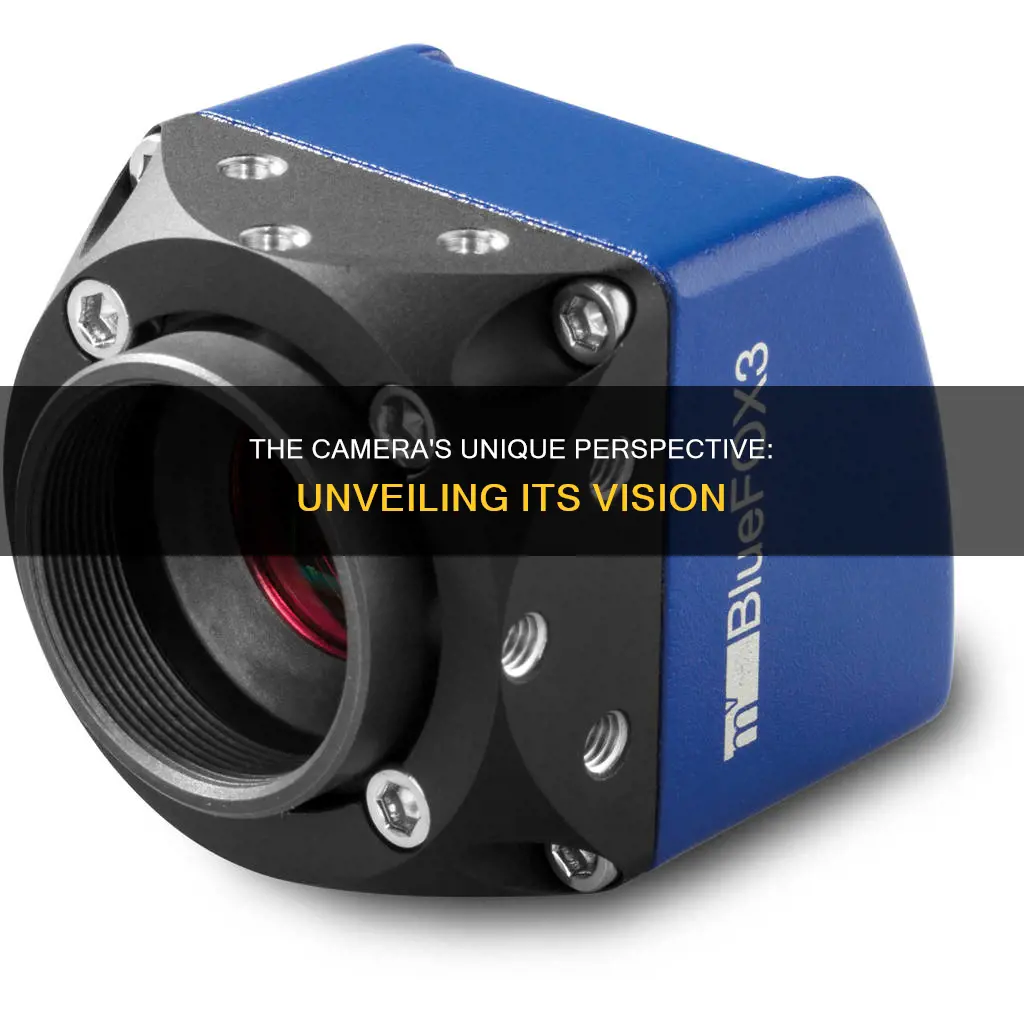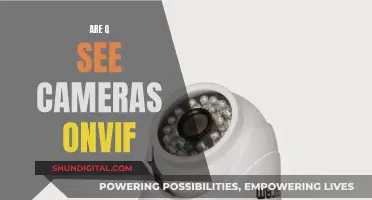
The human eye and a camera have a lot in common. They both have lenses and light-sensitive surfaces. However, there are some key differences in how they function.
The human eye has an iris that controls how much light enters, while the lens helps focus the light. At the back of the eye is the retina, a light-sensitive surface that captures the image and sends impulses to the brain via the optic nerve. The brain then interprets what we are seeing.
A camera works in a similar way. Light hits the surface of the lens, and the aperture controls how much light enters. The light then reaches a light-sensitive surface, either film or an imaging sensor chip in digital cameras.
One significant difference is in how they focus images. The eye's lens changes shape and thickness to stay focused on a moving object, while a camera lens relies on mechanical adjustments. Another difference lies in colour processing. The human retina contains two types of photoreceptors, rods and cones, which enable colour vision. In contrast, cameras have only one type of photoreceptor and use filters to detect red, blue, and green light.
While the human eye and camera share similarities, their unique capabilities offer distinct advantages in capturing images.
| Characteristics | Values |
|---|---|
| Camera lenses | Wide-angle, long-focus, and macro lenses |
| Light intensity | Cameras can only record a limited range of light intensity |
| Shutter speed | Cameras require a shutter to capture images |
| Exposure | Cameras can overexpose or underexpose images depending on shutter speed |
| Image processing | Cameras use an internal light meter to automatically adjust exposure settings |
| Focus | Cameras focus on objects near the center of the frame |
| Colour processing | Cameras use filters to process colour |
What You'll Learn
- Camera lenses offer a range of focal lengths, providing perspectives that can be helpful but are different from what the human eye sees
- A camera's sensor can only record a limited range of light intensity
- A camera requires a shutter, unlike the human eye
- A camera's sensor is a light gatherer, meaning that as long as the shutter is open, the image continues to get brighter
- A camera's photoreceptors are evenly distributed across the lens, whereas in the human eye, the cones are concentrated at the centre of the retina

Camera lenses offer a range of focal lengths, providing perspectives that can be helpful but are different from what the human eye sees
Camera lenses offer a range of focal lengths, each providing a different perspective on the subject being photographed. The focal length of a lens determines its angle of view and how much the subject will be magnified from a given position.
Lenses with shorter focal lengths provide a much wider angle of view and less magnification, making them better suited to landscape photography than product photography. Longer focal lengths offer a narrower angle of view and more magnification, which is why they are preferred for sports or wildlife photography rather than architectural photography.
Focal length can also impact camera shake. Longer focal lengths are more susceptible to camera shake because the magnification they offer causes even the tiniest movements to be magnified, resulting in blurred photos.
Prime (or fixed) lenses have a fixed focal length and are known for delivering high-quality images. Zoom lenses, on the other hand, provide a range of focal lengths, making them more versatile and reducing the need for multiple lenses.
While there are some similarities between the human eye and a camera, such as the presence of a lens with a variable opening, there are also significant differences. The human eye, in combination with the brain, has the ability to automatically produce a perfect exposure, whereas a camera requires a shutter to capture an image. The camera gathers light during an exposure, and the image gets brighter as more light hits the sensor.
While cameras aren't as good as our eyes at producing perfectly exposed images, they can show things that our eyes can't see. Thanks to the fact that a camera sensor is a light gatherer, we can use long exposures to capture images in very low light conditions or create light trails, for example.
Hooking up a Camera to TV: No DVR Needed
You may want to see also

A camera's sensor can only record a limited range of light intensity
The camera's sensor is the heart of the camera and determines its performance and properties. There are two main types of sensors: Charge-Coupled Device (CCD) and Complementary Metal Oxide Semiconductor (CMOS). CCD sensors are known for their high sensitivity and pixel-to-pixel consistency, while CMOS sensors offer higher speeds and lower power consumption.
The limited range of light intensity that a camera's sensor can record also affects its ability to capture colour images. Without a filter, the sensor can only record grayscale images since each pixel cannot distinguish how much of each colour has fallen into it. To capture colour images, a filter called a Bayer mosaic is placed over the sensor, which consists of red, green, and blue filters arranged in a specific pattern.
In addition to the sensor's limited range of light intensity, other factors such as the lens, shutter speed, and frame rate also impact the camera's ability to capture images accurately. Vignetting, for example, can occur if the sensor is too large for the lens, resulting in dark edges in the image. Adjusting the shutter speed can help control exposure and prevent blooming, which is when too much light hits the sensor and causes bright spots in the image.
Overall, a camera's sensor plays a crucial role in its ability to capture images, and its limited range of light intensity has led to the development of various techniques and technologies to enhance the camera's performance and image quality.
Infrared Cameras: Can They Really See Through Clothes?
You may want to see also

A camera requires a shutter, unlike the human eye
The human eye is a remarkable instrument, relying on refraction and lenses to form images. There are many similarities between the human eye and a camera, including a diaphragm to control the amount of light that passes through to the lens, and a lens to focus the light and create an image. However, there is one key difference: a camera requires a shutter, unlike the human eye.
The human eye contains a pupil, which sits at the centre of the iris, and acts as the diaphragm. The pupil controls the amount of light that passes through to the lens, just as a shutter does in a camera. However, unlike a camera, the human eye does not require a mechanical shutter to function. Instead, the eye, in combination with the brain, has the ability to "automatically produce a perfect exposure". This is because the eye is constantly adjusting to the available light, and our brains interpret the information received by our eyes to form a clear image.
In simple terms, a camera shutter works by gathering photons and adding them up during an exposure. The longer the shutter is open, the more photons hit the camera's sensor, and the brighter the image becomes. If the shutter speed is too short, the final image will be underexposed, and if it is too long, the image will be overexposed. Therefore, cameras require a shutter to control the amount of light that reaches the sensor and produce a correctly exposed image.
While the human eye does not have a physical shutter, it does have an equivalent function. The pupil adjusts the amount of light that enters the eye, just as a shutter does in a camera. However, unlike a camera shutter, the human pupil can dynamically adjust to changes in lighting conditions, ensuring that the eye receives the optimal amount of light at all times. This adaptive capability of the human eye is one of the key differences that set it apart from a camera.
In summary, while both the human eye and a camera share some similarities in their basic functions, the eye's ability to automatically adjust its exposure sets it apart from a camera, which requires a mechanical shutter to control the amount of light reaching the sensor. The human eye, in combination with the brain, acts as a sophisticated image-processing system, constantly adapting to the surrounding light conditions to produce clear and meaningful visual information.
Unlocking Apple Watch's Camera Remote: A Guide
You may want to see also

A camera's sensor is a light gatherer, meaning that as long as the shutter is open, the image continues to get brighter
A camera's sensor is a lot like an open bottle in the rain. The longer the shutter stays open, the more light is collected, and the more the sensor "fills up" with light. This is why a camera's sensor is considered a light gatherer.
The shutter is a curtain in front of the camera sensor that stays closed until the shutter button is pressed. When the shutter opens, the sensor is exposed to light, and the camera starts taking a photo. The shutter speed refers to how long the sensor is exposed to light.
Shutter speed is one of the three most important settings in photography, along with aperture and ISO. It is responsible for changing the brightness of your photo and creating dramatic effects. A longer shutter speed results in a brighter photo, as the sensor is exposed to light for a longer period of time.
The shutter speed also affects motion blur. A longer shutter speed will cause moving objects in your photo to appear blurred along the direction of motion. On the other hand, a faster shutter speed can eliminate motion blur even from fast-moving objects.
The shutter speed is typically measured in fractions of a second. For example, 1/4 means a quarter of a second, while 1/250 means one-two-hundred-and-fiftieth of a second. Most modern DSLRs and mirrorless cameras can handle shutter speeds of up to 1/4000th of a second, while some can go even faster.
The shutter speed, along with the aperture and ISO settings, determines the exposure of a photograph. A longer shutter speed results in a brighter photo, as more light reaches the sensor. However, too much light will result in an overexposed image, while too little light will lead to an underexposed image.
While the shutter speed controls the duration of light exposure, the aperture controls the area over which light can enter the camera, and the ISO controls the sensitivity of the sensor to light. These three settings can be adjusted in various combinations to achieve the desired exposure.
LG C9 TV: Does It Have a Camera?
You may want to see also

A camera's photoreceptors are evenly distributed across the lens, whereas in the human eye, the cones are concentrated at the centre of the retina
The human eye and a camera are different in how they focus an image and how they process colour. The lenses in the human eye change shape to stay focused on a moving object, and the thickness of the lens also changes to accommodate the image being viewed. A camera lens cannot do this, and this is why photographers change lenses depending on how far away they are from an object. Mechanical parts in the camera lens adjust to stay focused on a moving object.
The human eye processes colour differently from a camera. When the brain activates different combinations of cones, you can see the world in colour. Cameras also have photoreceptors, but they only have one type. They respond to red, blue, and green light using filters placed on top of their photoreceptors.
Spot Hidden Pinhole Cameras: Quick Tips and Tricks
You may want to see also
Frequently asked questions
A camera is a lightproof box that lets in light at the right moment. This light enters through the lens and onto a mirror, which bounces it into a pentaprism and into the eyepiece, and then into your eye. When you press the button, the mirror flips out of the way, and light hits the back of the camera, creating a chemical reaction on the film.
Cameras see through a single lens and record the world in two-dimensional images. The human eye, on the other hand, has stereoscopic vision, with two eyes looking at something from slightly different angles. This helps us judge distance and how close objects are to each other.
The camera lens collects light and projects it onto a detector surface—either a roll of film or a digital sensor. The lens is made up of numerous single lenses and lens groups, and its optical formula determines the image it can project.







